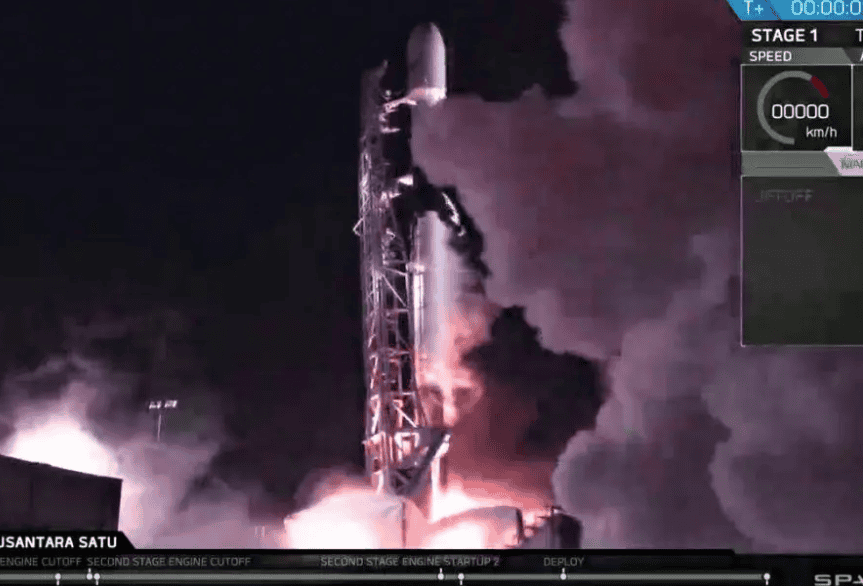
Beresheet, which successfully launched early Friday morning, has begun its elliptical orbit around the Earth at a distance of 69,400 km. and is now on its way to the moon.
Scientists and tech staff at Israel Aerospace Industries headquarters were notified of the spacecraft’s high sensitivity toward the sun’s rays in the star trackers on board, but are hopeful that this issue can be resolved. On Sunday, it will finish its first orbit around the Earth.
The solar waves in space are more powerful than expected and are blinding the spacecraft at the moment. When asked about the possible damage, Ephi, SpaceIL project manager at IAI who is unable to disclose his last name, told The Jerusalem Post, “It’s not easy to send a spaceship to the moon, but it knows how to protect yourself, God forbid, in case anything happens, it can enter a ‘safe mode.’”
He explained how at IAI headquarters and around the world an open line of communication is held with the spacecraft.
“There are stations all over the world… that can track the spacecraft,” Ephi said. He explained the location of numerous satellite dishes which can track its movement – even from thousands of miles away. “The farther the spacecraft is, the more difficult the communication line is, in terms of power, but there are enough antennas for this,” he said.
Furthermore, there are two types of solar panels used by the craft to reach the moon, while the other is used for landing.
“The spacecraft constantly uses its panels to face toward the sun, this loads the battery and allows the spacecraft to operate,” he said.
As 500 people gathered in a room facing two large screens awaiting the take-off, many held their breaths – would the launch be successful or not? The tension in the room was palpable. Journalists, experts and workers gathered at IAI headquarters, while plenty of viewers eagerly watched at home. The launch was scheduled to be broadcast at 3:45 a.m. Israel time, live streaming from Cape Canaveral, Florida, at 8:45 p.m. EST.
An hour before the launch, people sat at the edge of their seats, not bothering to listen as a scientist from IAI explained the process Beresheet will go through as it leaves Earth’s atmosphere and enters the elliptical orbit of our planet for two months, before making the transfer to the moon’s orbit and its slow but sure landing on the lunar surface.
At the grand hall, many sat eating popcorn in front of the large screens eagerly awaiting the lift-off – despite being more than 6,000 miles (10,000 km.) away in Florida – had every draw and excitement of a new movie. This showed Israel’s drive to go to the moon, making the Jewish state only the fourth country to do so.
“All I can say is farewell Beresheet,” said an emotional Morris Kahn, chairman of SpaceIL who donated more than $40 million to the project. “Our hopes are with you, make us proud.”
As Beresheet launched off SpaceX’s Falcon 9 rocket, the countdown was eminent. People clapped loudly and chanted toward the final countdown.
As Beresheet detached from the launcher to loud cheers, it then separated from what the tech people referred to as the “cellophane” – a euphemism for the foil that enveloped the spacecraft, which was jokingly compared to the plastic with which Israelis wrap festive gift baskets during the upcoming holiday of Purim – and finally disengaged from the launcher completely.
It spent 19 minutes in space, during which the audience waited for it to begin to enter Earth’s elliptical orbit.
Many loudly applauded and watched as the spacecraft hurtled through space.
“It gave one a tremendous sense of satisfaction,” Kahn told the Post. “It’s beautiful to watch this fantastic project and the planning that goes into it… to see this work in action was really exciting.”
Still, others such as Yariv Bash, one of the co-founders of SpaceIL, noted that the craft has yet to actually land on the moon.
“It still didn’t happen, it’s only the beginning,” he said. “It felt like a stone dropped from my heart watching it.” Bash noted that he and others at SpaceIL and IAI eagerly await Beresheet’s landing on the lunar surface – now scheduled for April 11.
The joint team of engineers, scientists and project managers were mostly male. However, as one of the leading women in this project, Inbal Kreiss, deputy general director of MBT space division, told the Post that women can achieve anything.
“You can do anything, you can reach [as high as you dream],” she said, adding that women “should only set the bar high for themselves.”
“This is a great accomplishment for the State of Israel,” a proud Prime Minister Benjamin Netanyahu, who attended the historic moment, imparted on the crowd.

